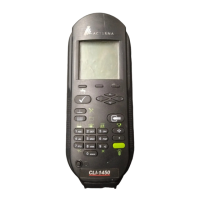can eliminate potential leak sources
using a process of elimination.
Cable leakage is more common in the
following areas of the cable system.
2-3
Potential
Leak Site Definition
What
to look for?
Headend
The control center of a cable televi-
sion system, where incoming signals
are amplified, converted, processed
and combined into a common cable
along with any origination cable-cast-
ing for transmission to subscribers.
The system usually includes antennas,
pre-amplifiers, frequency converters,
demodulators, modulators, proces-
sors, and other equipment.
Check for bad cable
connections, malfunc-
tioning equipment,
and worn or
damaged cable.
Trunk The main distribution lines leading
from the headend of the cable tele-
vision system to the various areas
where feeder lines are attached to
distribute signals to subscribers.
Check for bad connectors
or terminators. Look for
worn or damaged cable.
Also check for poor
craftsmanship which
involves using poor quali-
ty materials and poor
quality installation.
Drop or
Subscriber’s
Terminal
The line from the feeder cable to the
subscriber’s television or converter.
Check for improper
installation and malfunc-
tioning equipment. The
drop is the most common
cable leakage source.
Bridger, Bridging
Amplifier, or
Distribution
Amplifier
An amplifier connected directly into
the main trunk of the CATV system.
It serves as a sophisticated tap, pro-
viding isolation from the main trunk,
and has multiple high level outputs
that provide signal to the feeder por-
tion of the distribution network.
Check for bad connec-
tors or terminators.
Look for worn or dam-
aged cable. Check to
see if housing is not
closed. Check for poor
quality materials and
poor installation.
continued on next page

